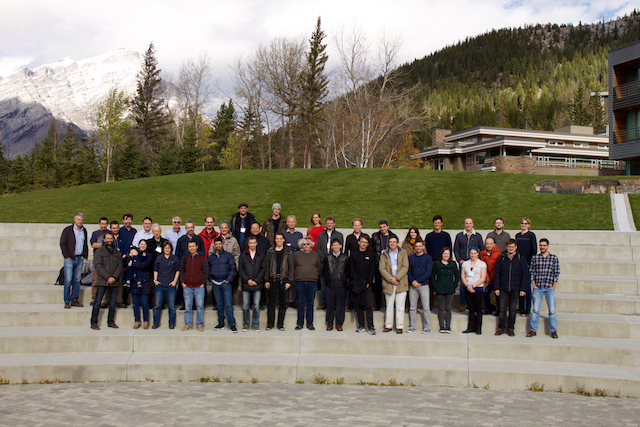New Perspectives in Representation Theory of Finite Groups (17w5003)
Organizers
Pham Tiep (University of Arizona)
Gunter Malle (Technische Universität Kaiserslautern)
Gabriel Navarro (Universidad de Valencia)
Britta Späth (Bergische Universität Wuppertal)
Description
The Banff International Research Station will host the "New Perspectives in Representation Theory of Finite Groups" workshop from October 15th to October 20th, 2017.
Group Theory is essentially the theory of symmetry for mathematical and physical systems, with major impact in diverse areas of mathematics. The Representation Theory of Finite Groups is a central area of Group Theory, with many fundamental problems, starting from a list of several deep conjectures formulated by Richard Brauer in 1963, and including subsequent conjectures of John McKay, Jonathan Alperin, Michel Broue, and others. Many of these conjectures relate global and local properties of finite groups, and all of them remain open up to date. The classification of finite simple groups raised the hope that one should be able to reduce some of the aforementioned conjectures to various statements about simple groups and thus provide a way to prove the conjectures. This hope has partially materialised as M. Isaacs, G. Malle, G. Navarro, B. Späth, and P. H. Tiep have been able to prove reduction theorems of several of these conjectures to simple groups, and, very recently, establish McKay's conjecture for the prime 2. The proposed meeting will bring together the leading experts and young researchers in the representation theory of finite groups to exploit the substantial recent advances on these fundamental conjectures and facilitate significant progress along the lines of all of them. We expect that by the time of the meeting, further substantial progress on the remaining steps towards proving these conjectures will have been achieved.
The Banff International Research Station for Mathematical Innovation and Discovery (BIRS) is a collaborative Canada-US-Mexico venture that provides
an environment for creative interaction as well as the exchange of ideas, knowledge, and methods within the Mathematical Sciences, with related disc
iplines and with industry. The research station is located at The Banff Centre in Alberta and is supported by Canada's Natural Science and Engineeri
ng Research Council (NSERC), the U.S. National Science Foundation (NSF), Alberta's Advanced Education and Technology, and Mexico's Consejo Nacional
de Ciencia y Tecnología (CONACYT).






